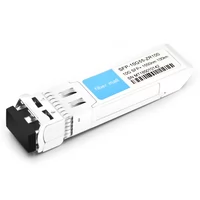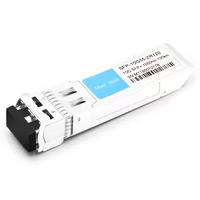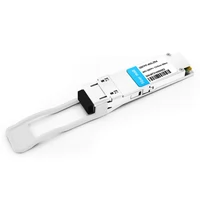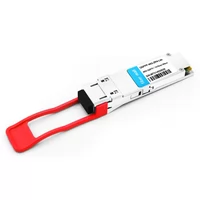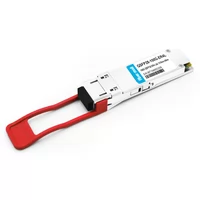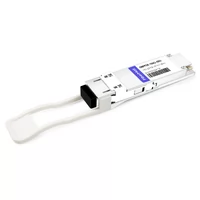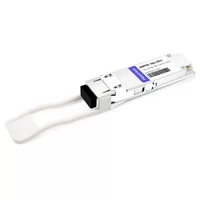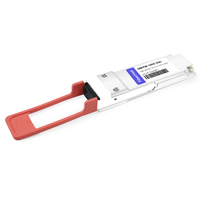NTT has been researching uncooled Electroabsorption Modulated Lasers (EMLs) for quite some time. The schematic diagram below illustrates the fabrication of a 1.55 µm InGaAlAs EML. Compared to InGaAsP, InGaAlAs exhibit better temperature stability. The Distributed Feedback (DFB) laser and Electro-Absorption Modulator (EAM) have lengths of 450 µm and 150 µm, respectively, with a 50 µm isolation gap. The butt-joint process ensures a calculated optical coupling efficiency of approximately 98% between the laser diode (LD) and EAM. Notably, the laser wavelength is intentionally detuned from the photoluminescence (PL) peak to match the PL peak at 85°C.
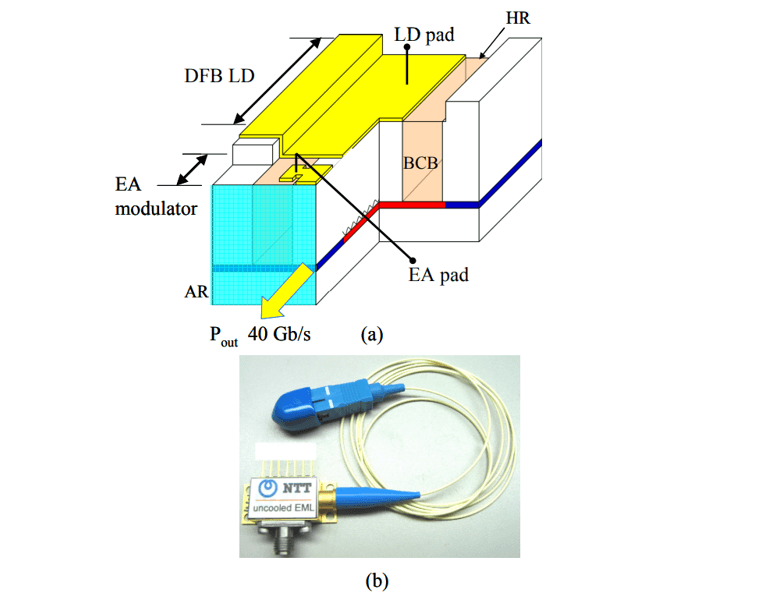
To achieve a high extinction ratio at low temperatures, the EAM Multiple Quantum Well (MQW) structure incorporates 12 strained MQWs. The EAM waveguide width is 1.5 µm to minimize parasitic capacitance, and BCB (benzo cyclo butene) bonding is used to suppress parasitic inductance by minimizing wire length. At -15°C, the DFB wavelength is 1541.8 nm, while at 80°C, it shifts to 1551.5 nm with a temperature sensitivity of 0.1 nm/°C. An optical output power of 10 mW is achieved at 80°C. The static Signal-to-Extinction Ratio (SER) exceeds 13.5 dB, and as the operating temperature increases, the extinction ratio improves due to reduced Δλ. With an LD current of 100 mA and a bias voltage (Vb) of -2.5 V, a bandwidth exceeding 39 GHz is realized.
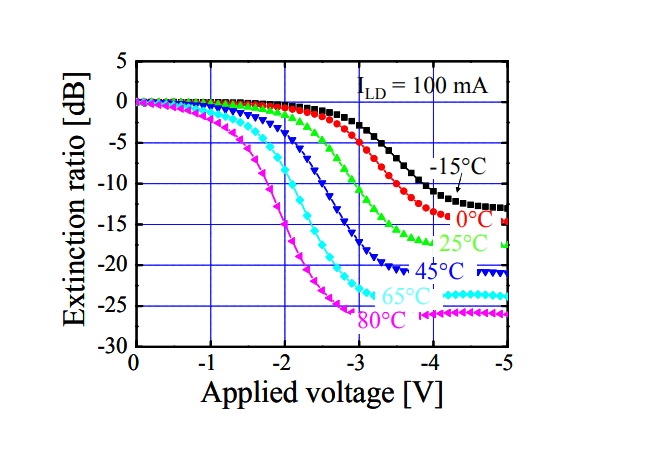
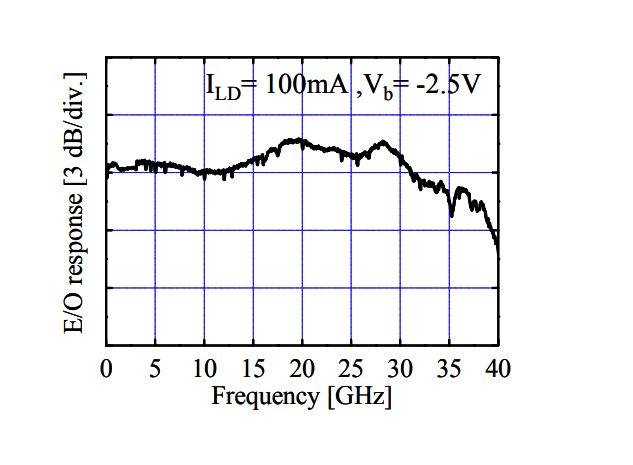
The temperature dependence of Vb is shown in the graph, where Vb values exhibit nearly linear variation with temperature. At -15°C, 25°C, 45°C, and 80°C, the measured chirp parameters at various Vb points are 0.61, 0.41, 0.48, and -0.11, respectively.
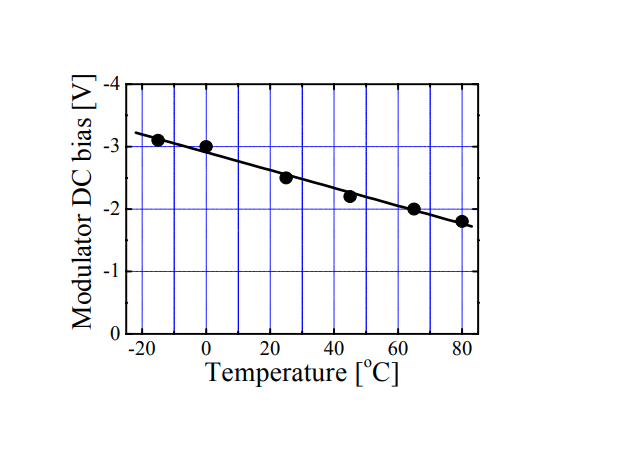
This EML design enables error-free 40 Gb/s transmission across all temperatures. By adjusting the bias voltage of the EA modulator to maintain a constant voltage swing, a 2 km single-mode fiber (SMF) transmission is achieved with power loss below 2 dB and dynamic ER exceeding 8.2 dB. This achievement marked the first utilization of EMLs for 40 Gb/s 2 km transmission across a wide temperature range at the time.
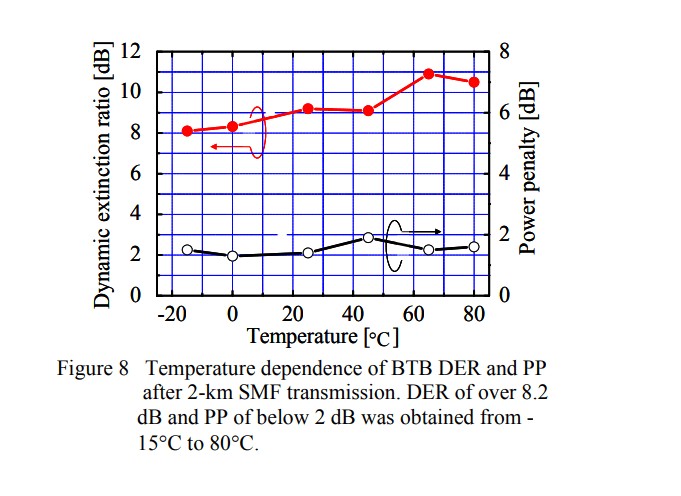
Uncooled EMLs face challenges related to the temperature sensitivity of the Electro-Absorption Modulator (EAM). NTT conducted further analysis in 2010. In the laser section, the DFB active layer also utilizes InGaAlAs. The graph below compares the impact of well count on output power at different temperatures, revealing that the 6-well Multiple Quantum Well (MQW) structure achieves the highest output power. Under the 6-well condition, varying the dEc value (250, 180, and 125 meV) corresponds to barrier layer bandgap wavelengths of 1.1, 1.2, and 1.3 µm, respectively. As dEc increases, carrier confinement strengthens, suppressing carrier overflow at high temperatures. A dEc value exceeding 250 meV is suitable for achieving high output power at elevated temperatures.
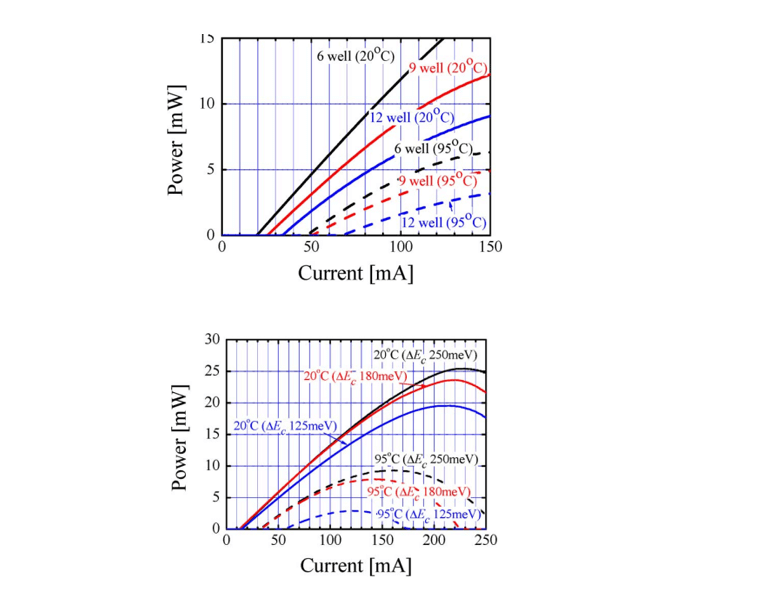
Regarding the EAM section, achieving high extinction ratio and low chirp parameters over a wide temperature range primarily involves considering the wavelength detuning between the DFB laser wavelength and the EA absorption peak. Typically, the temperature sensitivity of laser wavelength is 0.1 nm/°C, while the absorption peak’s sensitivity is approximately 0.7–0.8 nm/°C, resulting in an overall sensitivity of about 0.6 nm/°C. To enable broad temperature operation, the EAM’s detuning wavelength is 60 nm at 100°C and approximately 140 nm at -25°C. To achieve a sufficient extinction ratio, the EAM MQW structure is designed with 12 pairs. Setting dEc around 150 meV and using a barrier layer bandgap wavelength of 1.15 µm ensures both high extinction ratio and minimal chirp. The well-barrier strain is -0.8% and 0.1%, respectively.
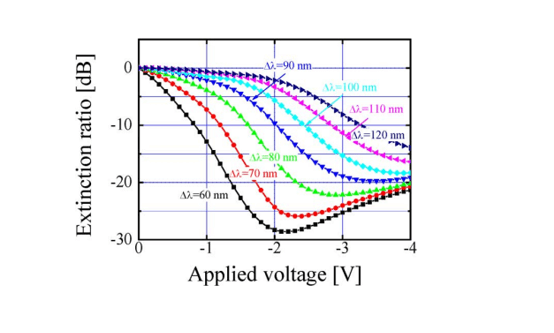
The 3 dB bandwidths for EAM lengths of 150 µm and 200 µm are 39 GHz and 25 GHz, respectively. At different temperatures, the 150 µm EML operates with varying bias voltages from -30°C to 100°C. Across all temperatures, the dynamic extinction ratio exceeds 8.2 dB for 40 Gb/s, and power loss in 40 Gb/s 2 km single-mode fiber (SMF) transmission remains below 2 dB.
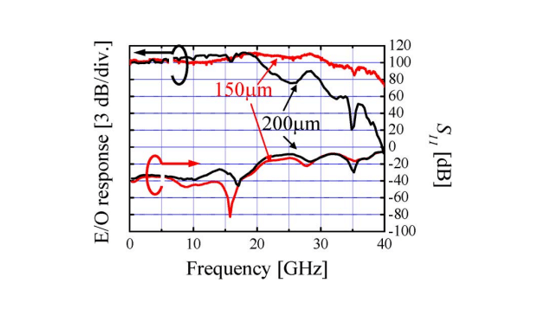
In 2022, HHI demonstrated a non-cooled 200 Gb/s PAM4 EML operating from 20°C to 85°C. This device integrates DFB, EAM, and Semiconductor Optical Amplifier (SOA), all sharing the same MQW layer. The device comprises a 350 µm DFB laser, an 80 µm EAM, and a 150 µm SOA, all utilizing ridge waveguide structures. Leveraging InGaAlAs MQWs, it achieves high-temperature operation with mutual isolation resistance exceeding 100 kΩ.
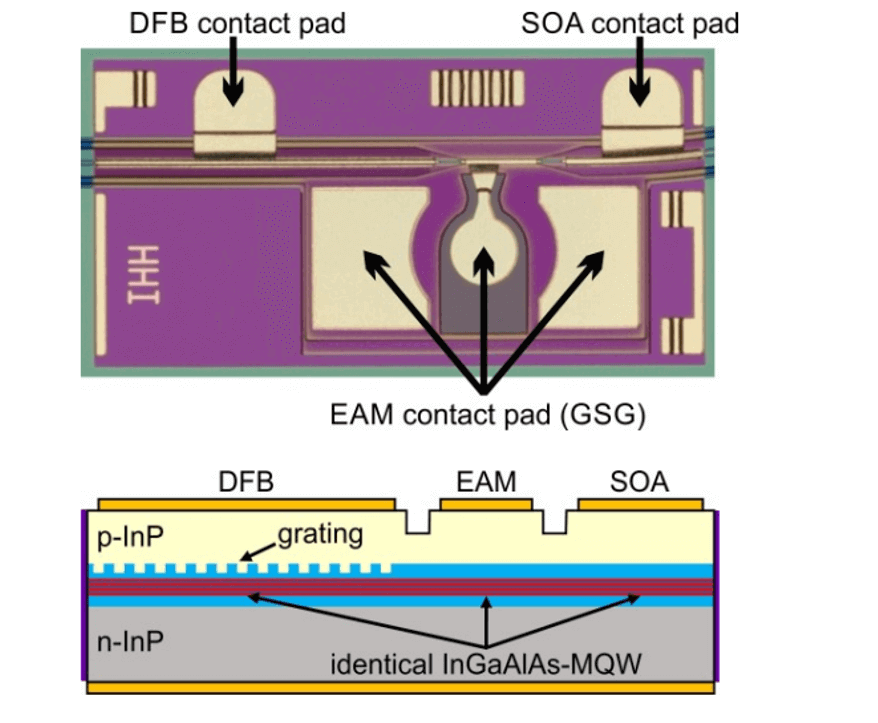
Throughout the temperature range, the device maintains a high modal suppression ratio (>40 dB). While the extinction ratio decreases at low temperatures, the 3 dB bandwidth remains high. The typical EAM bias point varies from -2.2 V to -0.7 V across the entire temperature range. At 20°C, the bandwidth exceeds 67 GHz, while at 85°C, it reaches 34 GHz.
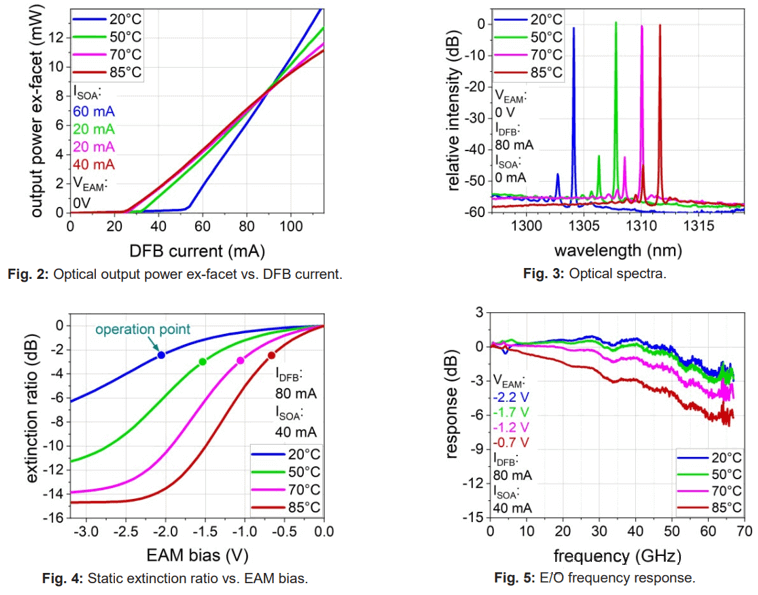
Broadcom developed a hybrid waveguide, non-cooled high-power EML in 2023. The DFB laser utilizes a CMBH waveguide structure with an optimized current-blocking layer to reduce leakage. It supports non-cooling and is designed for CWDM channels (1270, 1290, 1310, and 1330 nm). The EAM modulator features a ridge waveguide to minimize parasitic capacitance. Passive tapered waveguides reduce coupling losses and provide electrical isolation between the laser and modulator. A low-κ dielectric is used beneath the modulator’s metal pad to minimize parasitic capacitance.
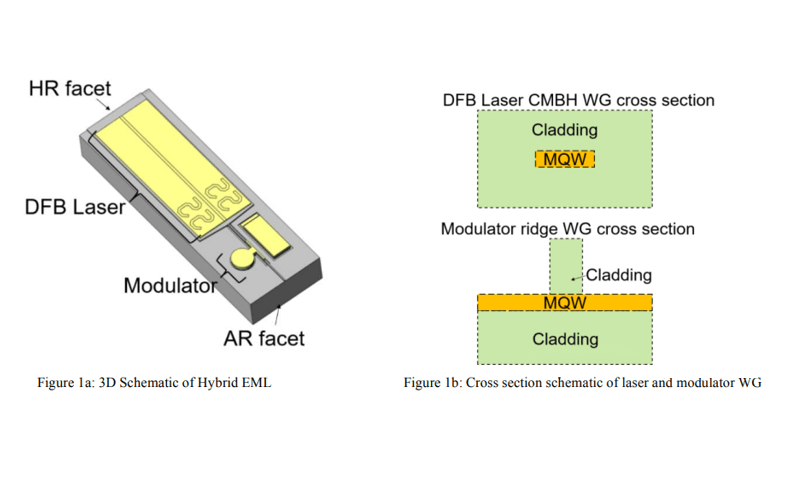
Testing was conducted at 20°C and 70°C. Across this temperature range, all channels achieved output power greater than 10 dBm with a laser current of 100 mA. Due to optimized current blocking layers, the L-I rolloff of the device remains below 120 mA even at 70°C. Peak and average relative intensity noise (RIN) for all channels were below -150 dB/Hz and -155 dB/Hz, respectively.
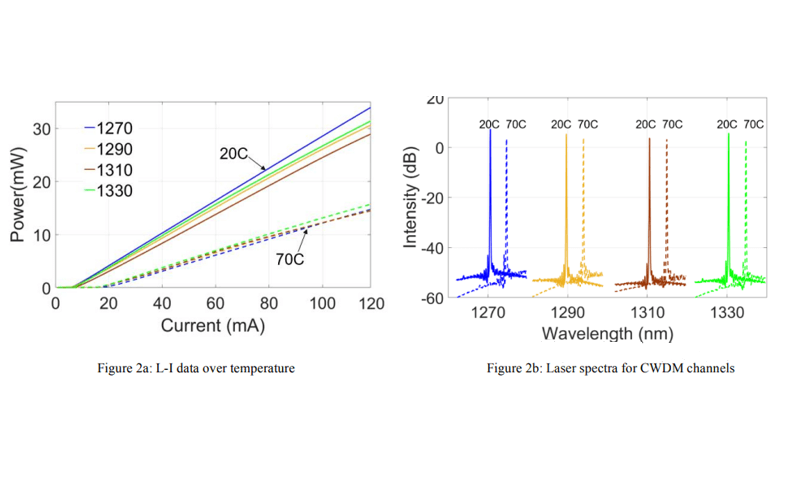
For COCs (chip-on-carrier), controlling inductance is crucial to maximizing bandwidth. Two-wire bonding is employed to reduce inductance between signal traces and the modulator pad. At all temperatures, S11 < 4.8 dB, and EO-BW exceeds 60 GHz.
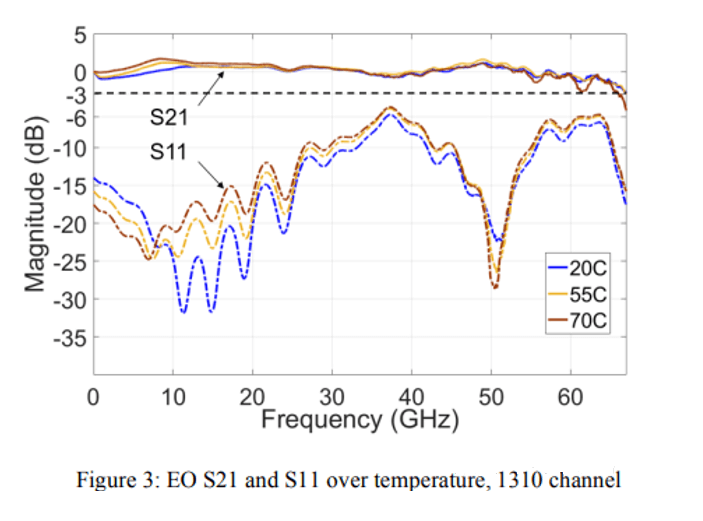
Testing at 112.5 GBd (225 Gb/s) PAM4@1.1Vpp revealed that all four channels exhibited eye diagrams before and after thermal balance at 20°C and 70°C. TDECQ was below 2 dB, and ER was 4 dB. Even at 70°C, the chip’s output power exceeded 7 dBm, enabling 2 km fiber transmission.
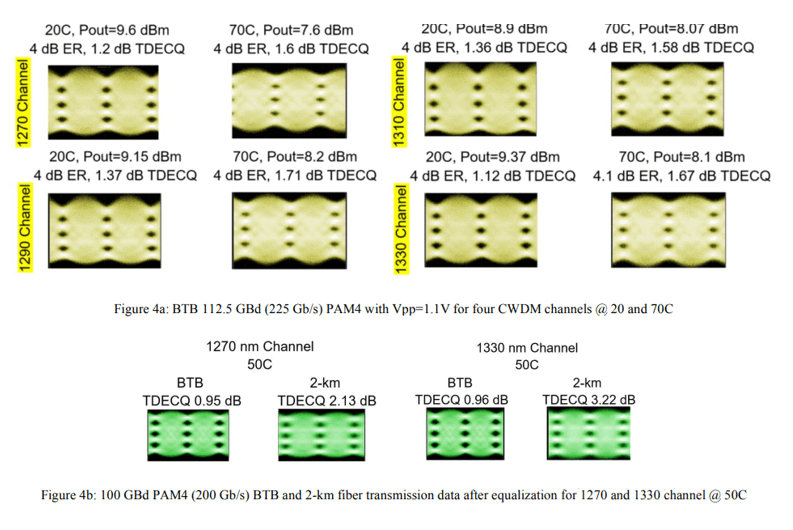
In summary, achieving non-cooled EML requires thoughtful material design. DFB lasers using InGaAlAs should be wavelength-mismatched with the PL peak, ensuring minimal power degradation at high temperatures. EAM design should incorporate energy barriers to maintain a high extinction ratio even at elevated temperatures, often utilizing multiple obstacles. High-frequency design principles, such as narrow waveguides and low-dielectric materials, remain relevant.
Related Products:
-
 SFP-10G55-ZR100 10G SFP+ ZR 1550nm 100km LC SMF DDM Transceiver Module
$280.00
SFP-10G55-ZR100 10G SFP+ ZR 1550nm 100km LC SMF DDM Transceiver Module
$280.00
-
 SFP-10G55-ZR120 10G SFP+ ZR 1550nm 120km LC SMF DDM Transceiver Module
$400.00
SFP-10G55-ZR120 10G SFP+ ZR 1550nm 120km LC SMF DDM Transceiver Module
$400.00
-
 QSFPP-40G-ZR4 40G QSFP+ ZR4 LWDM4 80km LC SMF DDM Optical Transceiver Module
$1200.00
QSFPP-40G-ZR4 40G QSFP+ ZR4 LWDM4 80km LC SMF DDM Optical Transceiver Module
$1200.00
-
 QSFPP-40G-ZR4-Lite 40G QSFP+ ZR4 Lite CWDM4 60km LC SMF DDM Optical Transceiver Module
$599.00
QSFPP-40G-ZR4-Lite 40G QSFP+ ZR4 Lite CWDM4 60km LC SMF DDM Optical Transceiver Module
$599.00
-
 QSFP28-100G-ER4L 100G QSFP28 ER4 Lite 1310nm (LAN WDM) 40km with FEC,30km without FEC LC SMF DDM Transceiver Module
$800.00
QSFP28-100G-ER4L 100G QSFP28 ER4 Lite 1310nm (LAN WDM) 40km with FEC,30km without FEC LC SMF DDM Transceiver Module
$800.00
-
 QSFP28-100G-ZR4 100G QSFP28 ZR4 1296-1309nm LWDM 80km LC SMF DDM Transceiver Module
$1500.00
QSFP28-100G-ZR4 100G QSFP28 ZR4 1296-1309nm LWDM 80km LC SMF DDM Transceiver Module
$1500.00
-
 QSFP28-100G-ZR4+ 100G QSFP28 ZR4+ LWDM4 100km LC SMF DDM Optical Transceiver Module
$2000.00
QSFP28-100G-ZR4+ 100G QSFP28 ZR4+ LWDM4 100km LC SMF DDM Optical Transceiver Module
$2000.00
-
 QSFP28-100G-ZR4L 100G QSFP28 ZR4 Lite 1310nm LWDM4 60km LC SMF DDM Transceiver Module
$1300.00
QSFP28-100G-ZR4L 100G QSFP28 ZR4 Lite 1310nm LWDM4 60km LC SMF DDM Transceiver Module
$1300.00

